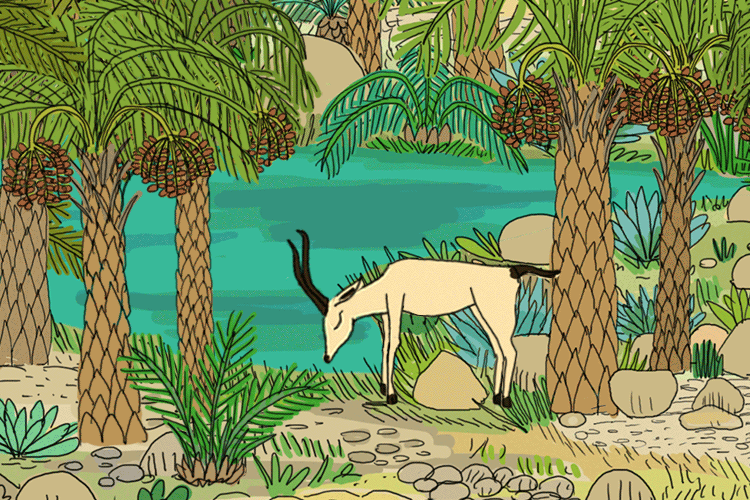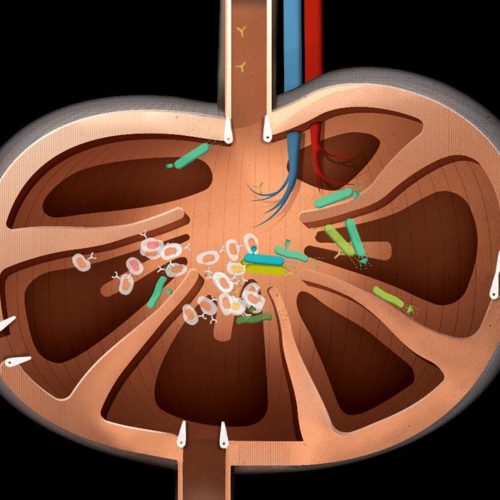Bonus curios: a desert retreat’s surprising source

Heat weighs heavy in the arid desert. Rain offers little relief; it often evaporates even before it hits the ground. So how do oases—those lush breaks in the monotonous landscape—form?
Once you dig deep enough, it’s surprisingly easy to find water. Beneath desert sands, porous rocks like limestone hold huge reserves of water, called aquifers—imagine a sodden sponge, not a freely flowing river. Layers of hard, impenetrable rock above and below these stores keep water in place. Cracks along the hard rock layers let water in and out. Occasional rain seeps underground to recharge aquifers. When water surfaces, it springs forth to form shimmering oases.
Oases can be quite large. Four great springs feed the Ein Gedi oasis of Israel, generating a total of three million cubic meters of water per year, enough to fill 1,200 Olympic swimming pools. The result is a verdant oasis known for its botanical gardens and copious bottled water production.
An interactive diorama of the earth’s biomes, Plants brims with secrets and surprises—we’ve even made a handbook of hints and fun facts for you and your kids. In these posts, we’ll peer into the sometimes-strange truths behind the worlds in our apps.
Heat weighs heavy in the arid desert. Rain offers little relief; it often evaporates even before it hits the ground. So how do oases—those lush breaks in the monotonous landscape—form?
Once you dig deep enough, it’s surprisingly easy to find water. Beneath desert sands, porous rocks like limestone hold huge reserves of water, called aquifers—imagine a sodden sponge, not a freely flowing river. Layers of hard, impenetrable rock above and below these stores keep water in place. Cracks along the hard rock layers let water in and out. Occasional rain seeps underground to recharge aquifers. When water surfaces, it springs forth to form shimmering oases.
Oases can be quite large. Four great springs feed the Ein Gedi oasis of Israel, generating a total of three million cubic meters of water per year, enough to fill 1,200 Olympic swimming pools. The result is a verdant oasis known for its botanical gardens and copious bottled water production.
An interactive diorama of the earth’s biomes, Plants brims with secrets and surprises—we’ve even made a handbook of hints and fun facts for you and your kids. In these posts, we’ll peer into the sometimes-strange truths behind the worlds in our apps.
